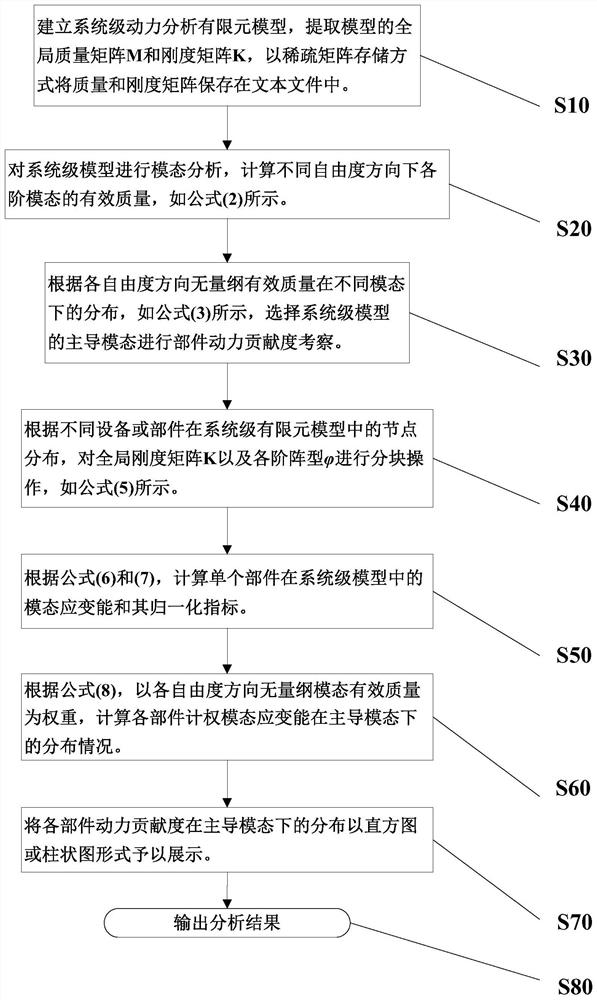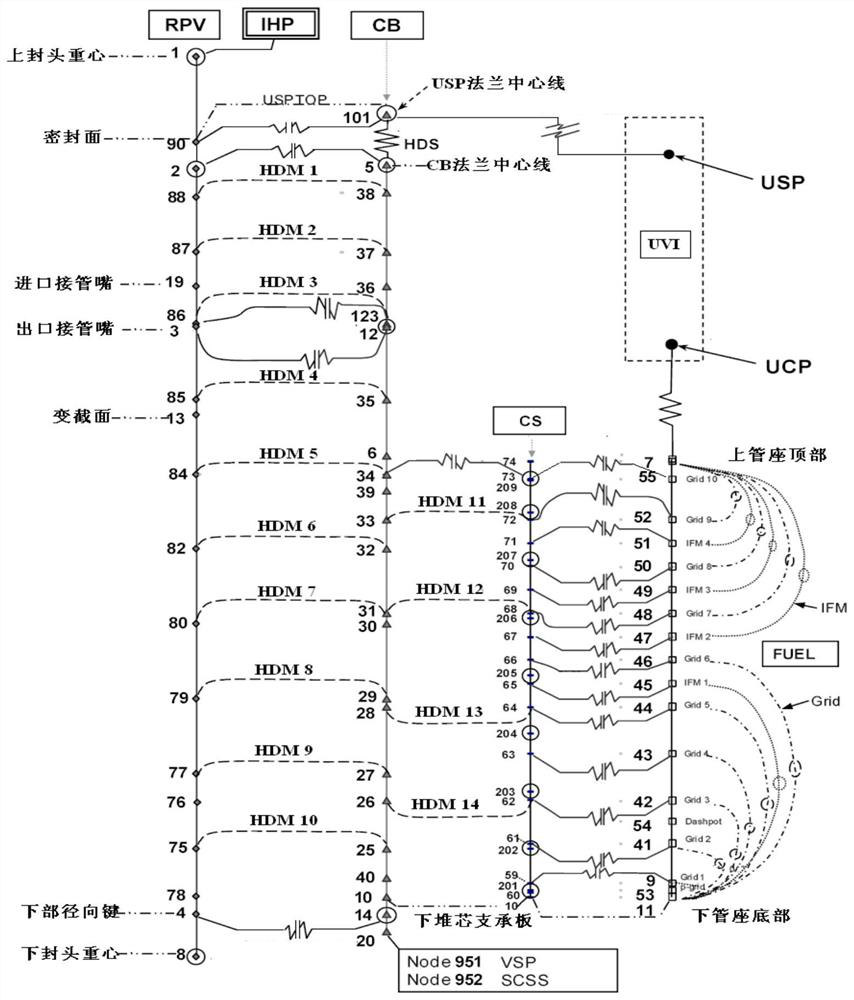A method and system for analyzing the dynamic contribution of each component in a system-level analysis model
An analysis model and analysis method technology, applied in the direction of instrumentation, design optimization/simulation, electrical digital data processing, etc., can solve the problems of not being able to give a quantitative description of the component's dynamic contribution degree, lack of dynamic contribution degree analysis technology, etc., to avoid calculation Effects of cost and opportunity
- Summary
- Abstract
- Description
- Claims
- Application Information
AI Technical Summary
Problems solved by technology
Method used
Image
Examples
Embodiment 1
[0065] like figure 1 As shown, a method for analyzing the dynamic contribution of each component of a system-level analysis model of the present invention includes: S1: establishing a dynamic analysis model of a reactor system, and extracting a global mass matrix and a global stiffness matrix in the dynamic analysis model; S2: Perform modal analysis on the dynamic analysis model according to the global mass matrix and the global stiffness matrix; S3: Obtain a modal strain energy equation of the dynamic analysis model according to the modal analysis, and obtain a modal strain energy equation of the dynamic analysis model according to the modal strain energy The equation obtains the modal strain energy of each single component in each order mode; S4: normalize the modal strain energy of each single component to obtain the normalized modal strain energy, according to the normalized modal strain energy Get the power contribution of each single component.
[0066] In the implement...
Embodiment 2
[0099] In this embodiment, a system for analyzing the dynamic contribution of each component of a system-level analysis model includes:
[0100] Modeling unit: used to establish the dynamic analysis model of the reactor system;
[0101] Extraction unit: used to extract the global mass matrix and the global stiffness matrix in the dynamic analysis model;
[0102] Analysis unit: used to perform modal analysis on the dynamic analysis model according to the global mass matrix and the global stiffness matrix;
[0103] processing unit: used to obtain the modal strain energy equation of the dynamic analysis model according to the modal analysis, and obtain the modal strain energy of each single component in each order mode according to the modal strain energy equation;
[0104] Normalization unit: used to normalize the modal strain energy of each single component to obtain the normalized modal strain energy, and obtain the dynamic contribution degree of each single component accordi...
Embodiment 3
[0108] This embodiment is based on Embodiment 1 and Embodiment 2,
[0109] The embodiments of the present application provide a method for analyzing the dynamic contribution of several key components in a reactor system along the axis of the reactor pressure vessel, the method comprising:
[0110] 1. Use the finite element calculation program to carry out dynamic analysis and modeling of the reactor system. The key components included in the model include: fuel assembly (FA), core basket (CB), upper internals (UVI), core shroud (CS), control rod drive mechanism (CRDM), reactor pressure vessel (RPV) ), the integrated top structure (UVI).
[0111] 2. Extract the global mass and stiffness matrices in the system-level dynamic analysis model, denoted as M and K, and record the mass and stiffness matrices of the system-level model in a text file in the form of sparse matrix storage.
[0112] 3. Carry out modal analysis according to the mass and stiffness matrices of the system-lev...
PUM
 Login to View More
Login to View More Abstract
Description
Claims
Application Information
 Login to View More
Login to View More - R&D
- Intellectual Property
- Life Sciences
- Materials
- Tech Scout
- Unparalleled Data Quality
- Higher Quality Content
- 60% Fewer Hallucinations
Browse by: Latest US Patents, China's latest patents, Technical Efficacy Thesaurus, Application Domain, Technology Topic, Popular Technical Reports.
© 2025 PatSnap. All rights reserved.Legal|Privacy policy|Modern Slavery Act Transparency Statement|Sitemap|About US| Contact US: help@patsnap.com



